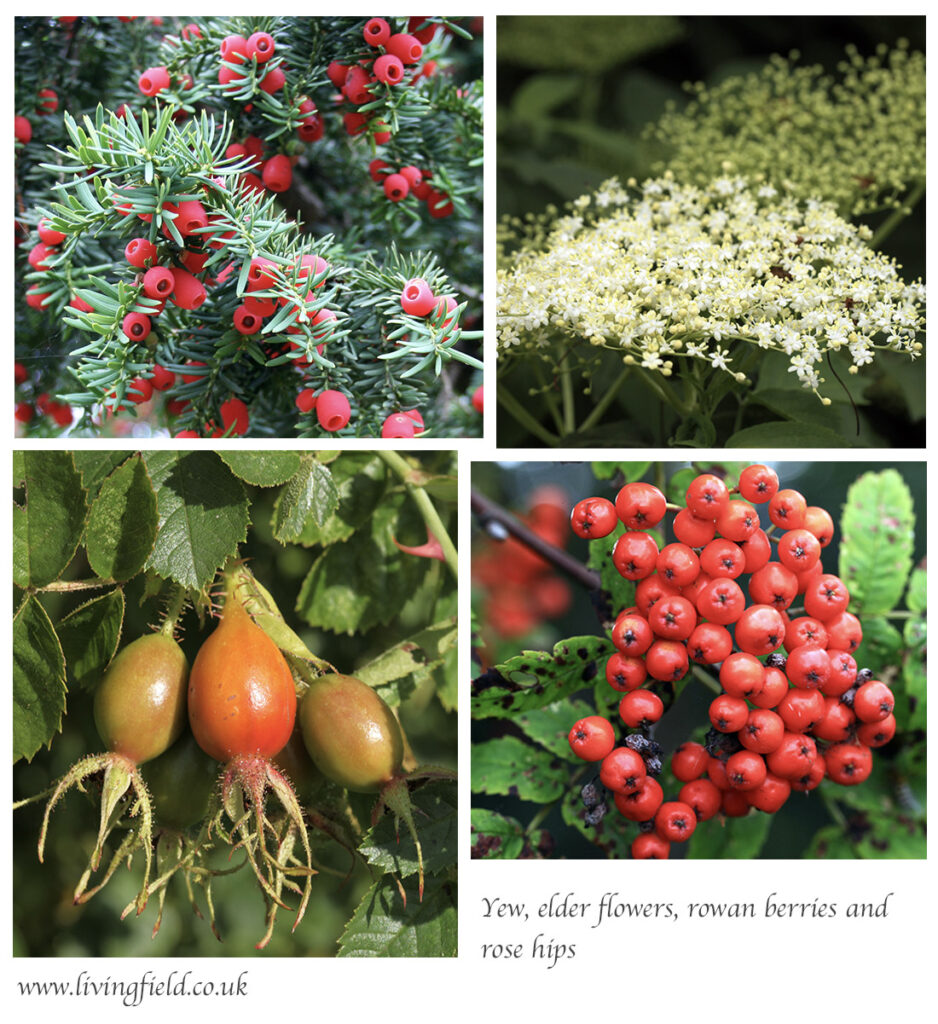Medicinal plants foraging day led by Anna Canning at Kinloss Abbey, Moray. Daisy, dock, dandelion. Poultice, poison, painkiller. To eat or not to eat! The Kinloss Abbey Trust. Part of the Living Field’s exploration of medicinal plants.
On 14 May 2022, Anna Canning a medical herbalist and botanist led a well attended forage around the abbey grounds for plants once used (and some still used) for healing and health.
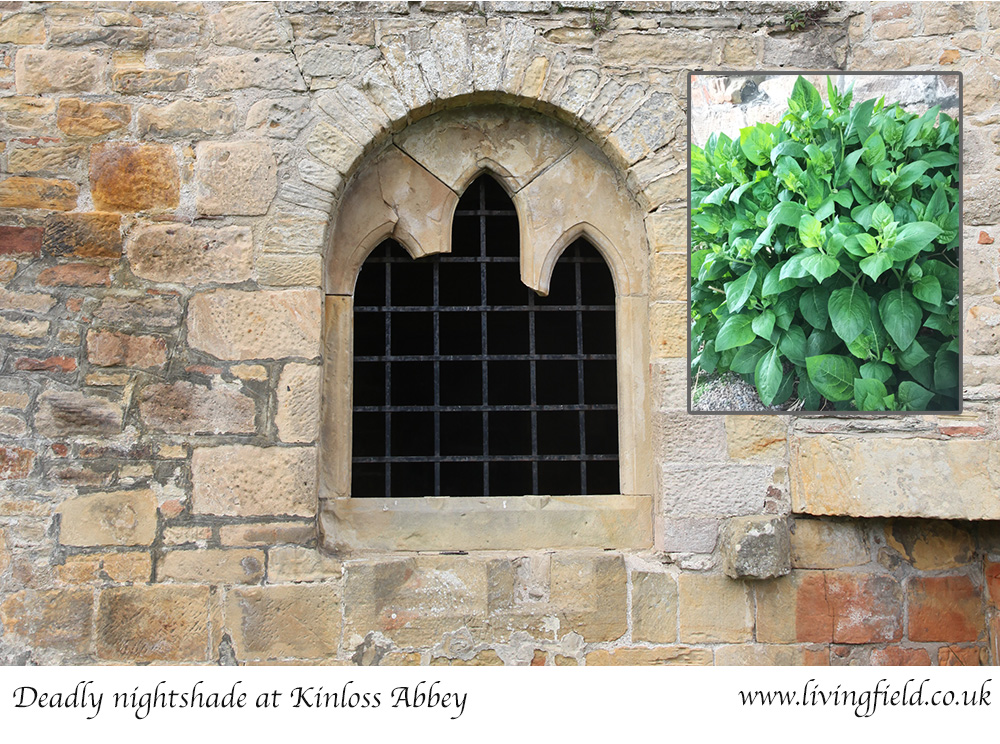
The abbey
Kinloss Abbey [1] was a major northern centre during the monastic expansion in the 1100s. The Cistercian order established its first house in 1128 in the south of England, spread to Rievaulx in Yorkshire, from there to Melrose in the Scottish Borders and then on to more northerly sites such as Coupar and Kinloss.
Kinloss Abbey dates from 1150 and became a thriving centre of religion, farming and healing. The buildings were still being developed in the 1500s but in 1650 the stone was ‘said to have been sold for the building of Cromwell’s fort at Inverness.’ It’s been in ruins for several centuries since. The Kinloss Abbey Trust [2] cares for it now, restoring the remains and holding events like this one.
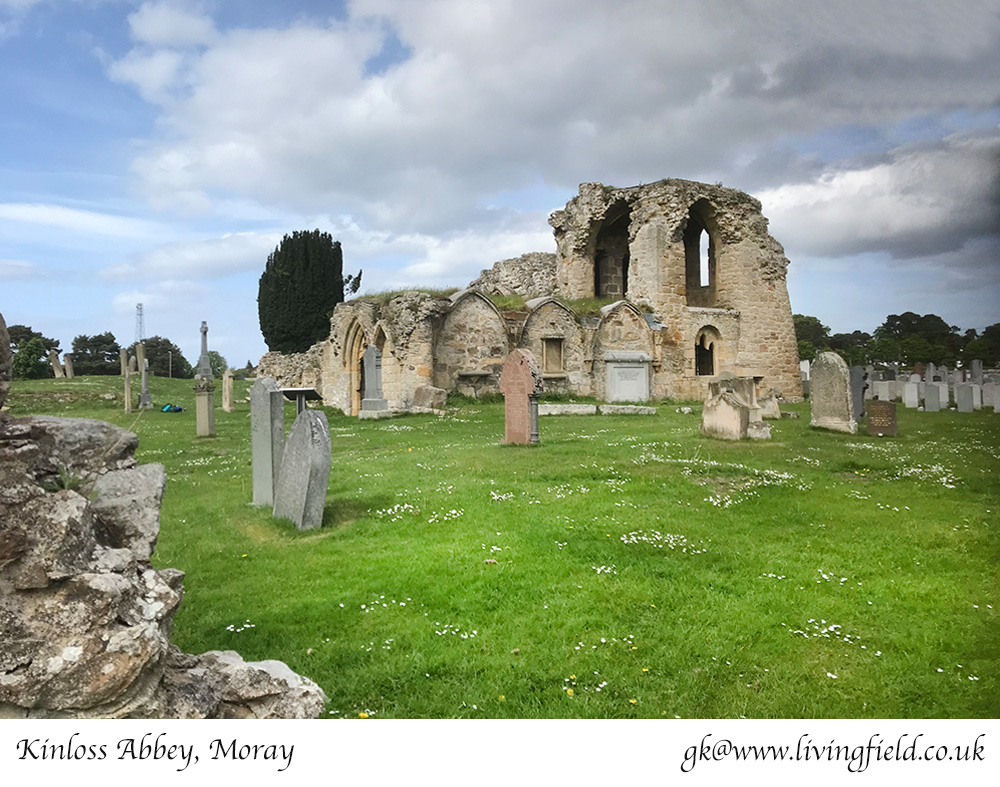
The plants
Anna Canning [3] began with a look at some common herbs such as creeping buttercup, daisy and dandelion growing in short cut grass by the gate. Take the dandelion. Her notes list its various properties – leaves high in vitamin C, a diuretic, eaten in salads; root a digestive tonic, can be braised with oil and soy sauce; stem latex a traditional remedy for warts; flower heads (yellow parts only) sprinkled on salads and stirred through rice dishes, made into a cordial and dandelion ‘honey’.
The group then progressed to more powerful stuff – a clump of vegetation hosting several herbs (photographs below), notably greater celandine Chelidonium majus, hedge woundwort Stachys sylvatica and deadly nightshade Atropa belladonna.
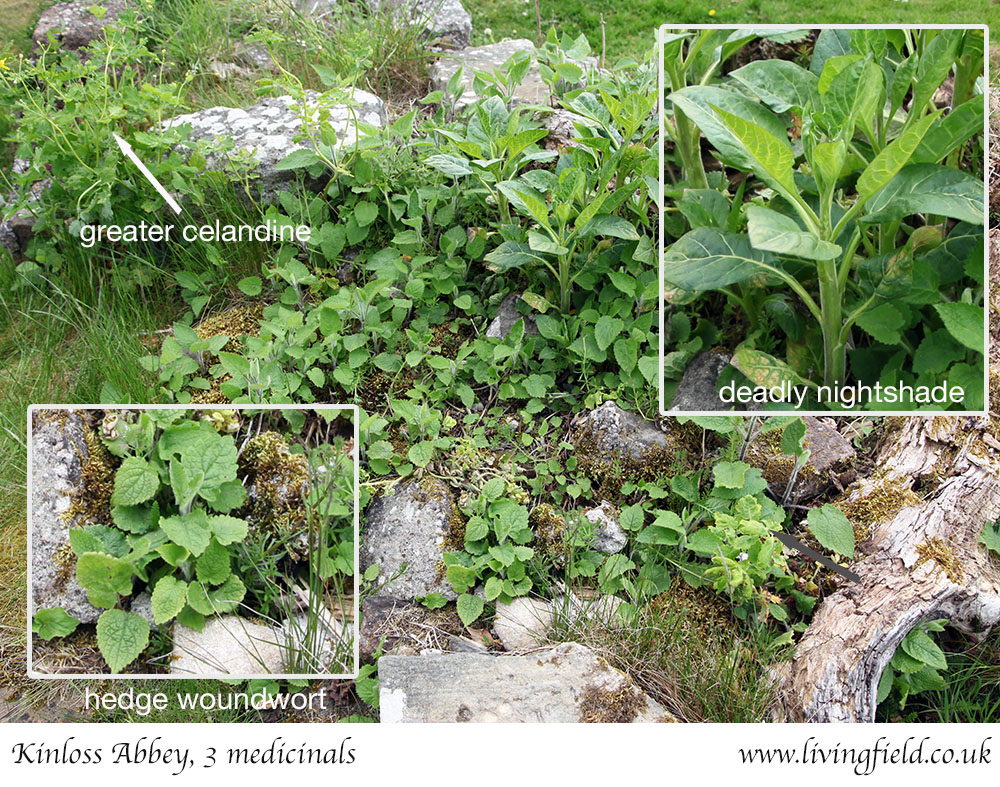
While hedge woundwort is common in the area, greater celandine and deadly nightshade are not, and may have persisted in the Abbey grounds from much earlier times. The medicinal value of these and other plants was discovered long ago, set down in a few books written in Greek or Latin which can still be read today. Recognition of plants, how to grow them and how to heal with them was spread during the monastic expansion across Europe. The monks and nuns knew which wild plants to collect and grew their own more exotic species in dedicated herb gardens.
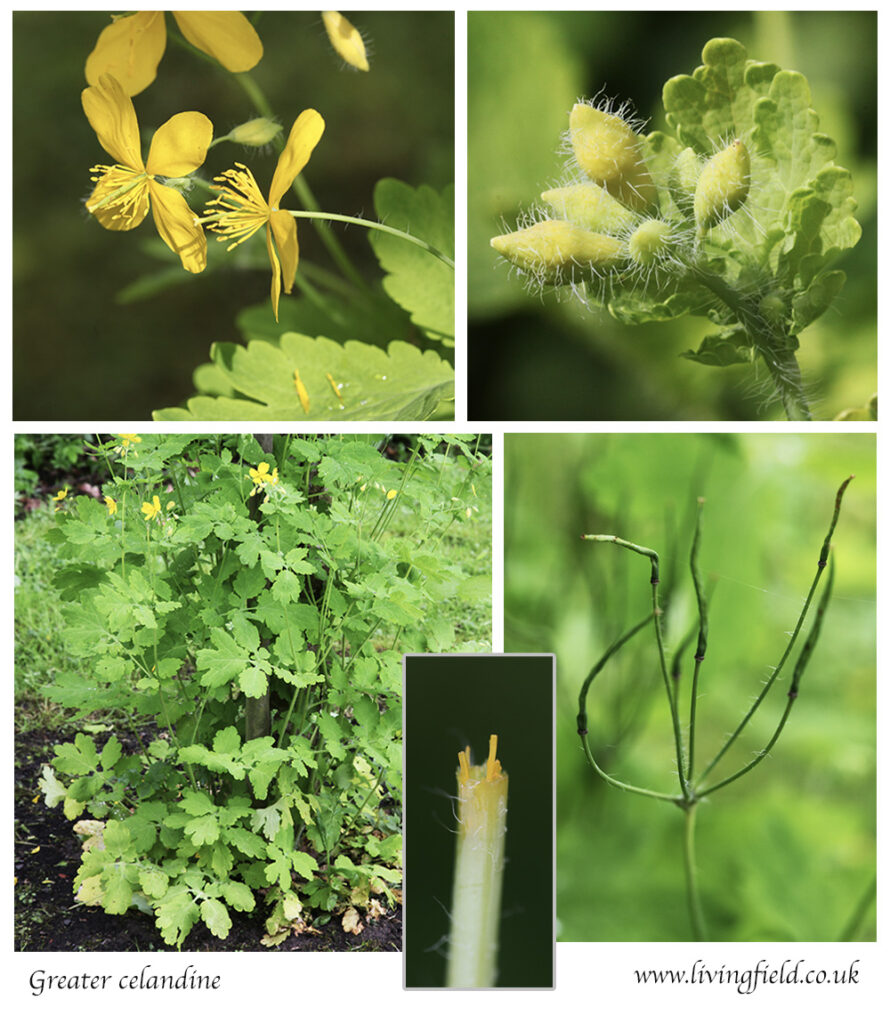
From Anna’s notes on the plants, we can learn that hedge woundwort was used as a poultice to stop bleeding and heal cuts, not just on the skin but also internally. Greater celandine, toxic and ‘not for home use’ has been applied as a sedative and exudes an orange sap used to treat warts. Deadly nightshade, highly toxic, is the origin of atropine, which has now been replaced in most uses by safer synthetic drugs. Atropine is still sometimes used as a mydriatic – to dilate the pupils of the eyes to facilitate retinal examination – and also to treat poisoning by organophosphate pesticide or fly agaric, and to raise a dangerously low heart rate (bradycardia).
Mediaeval herbalists held a remarkable degree of knowledge and practical expertise. They knew, for example, how to combine the properties of poisonous plants in the right dosage to reduce pain and trauma during surgery, well before modern anaesthetics. At Soutra Hopital [4], excavations of the drains suggested deadly nightshade was used in this way with hemlock Conium maculatum and opium poppy Papaver somniferum.
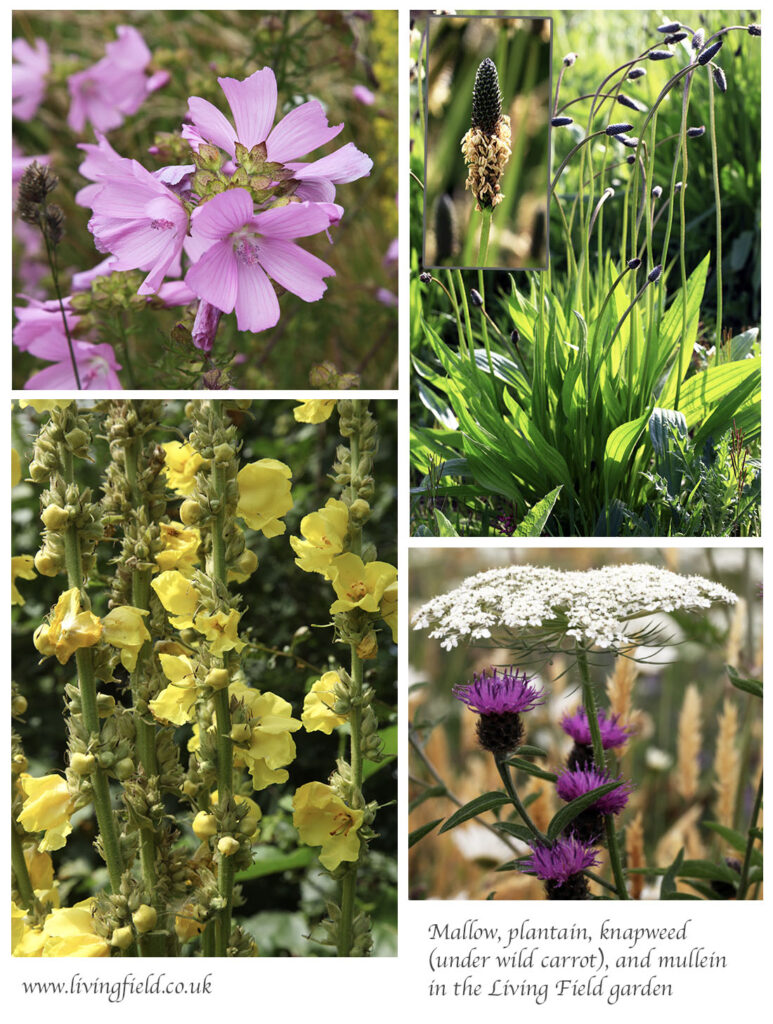
Today in Britain, the properties of medicinal plants – even common species such as dandelion, chickweed and cleavers – are unknown to most people. This is a position that Anna Canning is working to change.
The Living Field welcomes the opportunity to visit Kinloss Abbey and to learn more about plants from Anna’s perspective as a qualified medical herbalist. Some of the herbs and woody plants she told us about are shown in the two panels made up of photographs taken mostly in the Living Field garden [5].
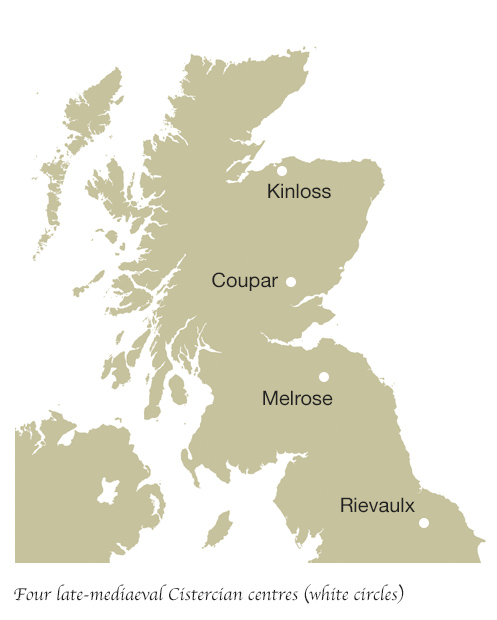
Sources | references | links
[1] Kinloss Abbey near Kinloss village and Findhorn Bay, Moray. Location – lat 57.63, long -3.57 (306535, 861461).
[2] The web site of the Kinloss Abbey Trust gives a summary of the history and archaeology of the Abbey. The Trust aims to secure and develop the ruins and to host events and fundraisers. More on the archaeology at Canmore Kinloss Abbey and Burial Ground and Historic Environment Scotland.
[3] Anna Canning is a ‘qualified medical herbalist, translator, researcher and educator’ based in Edinburgh where she runs FloraMedica. See The Plants that Heal in Frontiers magazine, the FloraMedica entry at the Scottish Radical Herbal Network and also Wild At Art.
[4] Soutra Hospital in the Borders, OS map ref NT 45254 58409, was established in 1164 or earlier as a lodging for travellers and then a hospital. Studies begun in the 1980s by Soutra Hospital Archaeoethnopharmacological Research Project (SHARP) found a range of objects used in medical and surgical practice, including plant remains probably combined as an anaesthetic. Brian Moffat who led the research at SHARP was scheduled to lead the Kinloss foraging with Anna Canning but unfortunately had to withdraw. See also: Soutra Aisle at Canmore.
[5] Medicinal plants on the Living Field web site: Medicinals through the ages 1, a page on Pilewort, and some of the medicinal plants grown at the Living Field garden.
Contact for this page: geoff.squire@outlook.com or geoff.squire@hutton.ac.uk
